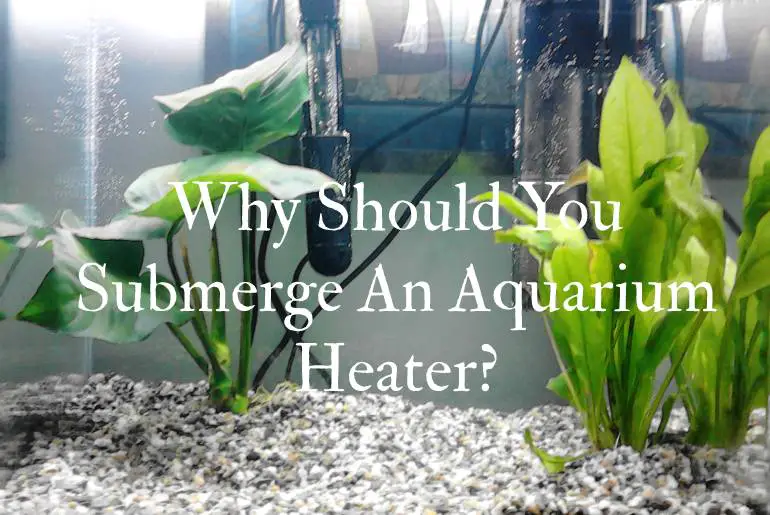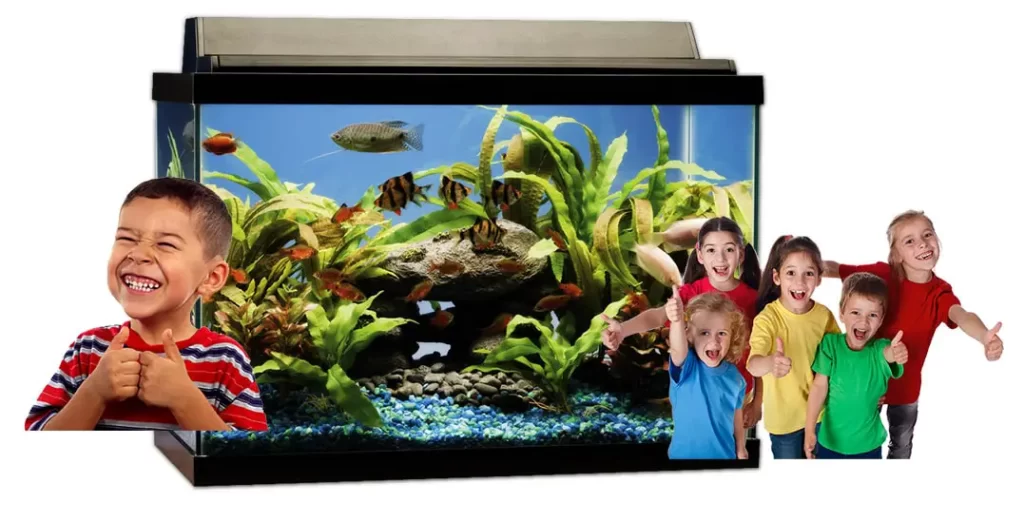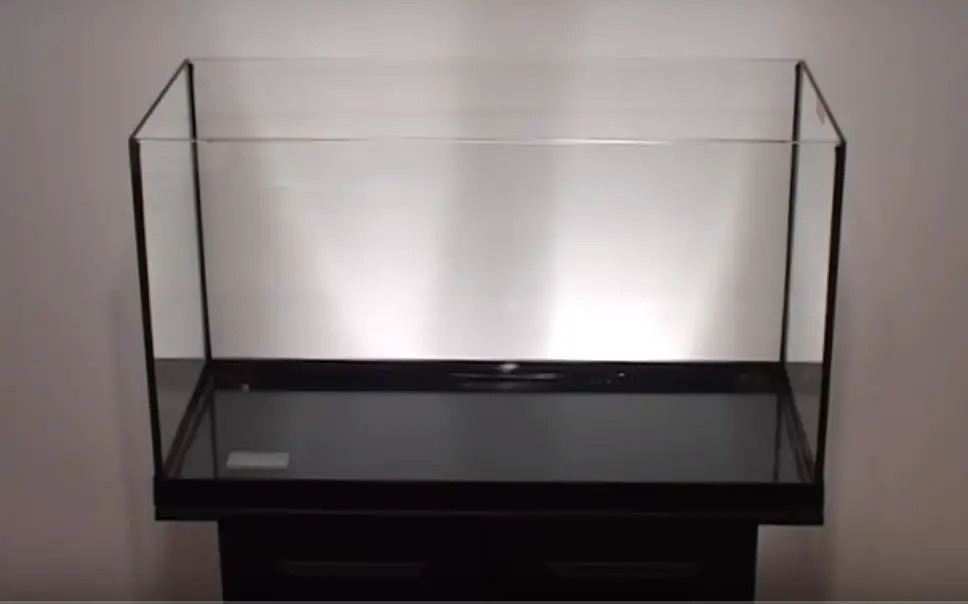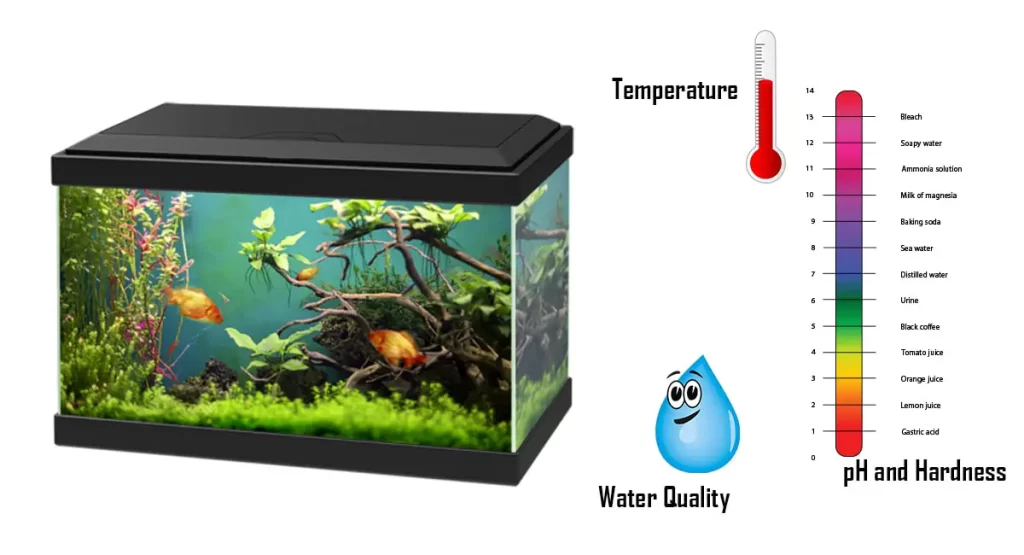Aquarium heaters are one of the most important things that you need to have. This very equipment ensures your fish tank’s success. They provide warmth and help you keep the temperature regulated, which is vital for any fish species. Many people don’t know Why Should You Submerge An Aquarium Heater? or what size of aquarium heater they should buy?
You should submerge Aquarium heaters in water so that they can safely transfer the warmth from the electrical current to the tank. By submerging the heater, you can reduce the risk of fire or electric shock that could happen if you fail to submerge it.
Aquarium heaters come in all shapes and sizes, so it is confusing to choose the right one for your fish tank.
This article will talk about why it’s important that your aquarium heater is fully submerged in water, and also give you tips on what kind of fish species would do well with each type of heating system! We will take a look at the different options you have when it comes to fish tank heating.
Why Should You Submerge An Aquarium Heater?
Aquarium Heaters should be fully submerged for two main reasons:
- If the heater is not fully submerged, there will always be a lack of heat at the bottom and top of the aquarium. This means that an underheated portion is created in your tank which can result in unhealthy conditions for fish. It also means that your heater is not working efficiently.
- If you submerge the aquarium heater, it will work more effectively. When a submersed heater heats up an object from all sides, it works much better than when it just blows hot air into one point of contact with water or on the top surface.
- Fully submerging an aquarium heater can help to ensure a safer environment for fish in their tank. As there is less risk of a fire hazard in case submerged aquarium heater.
Is Submersible Heater Best For You?
If you are a beginner or just want to be safe, the submersible heater is your best choice. With these heaters, the risk of overheating and being able to damage nearby objects is reduced significantly.
Full Submerged Heater’s Safety Measures
When using a fully submerged heater there should not be any object blocking it from touching the water. You should fully submerge the aquarium heater and have a few inches of water above it. This will help you to reduce the risk of overheating, arcing, or fire hazards. These all can happen if there is not enough room for heat dissipation.
If you are using an electric aquarium heater that does not get wet, make sure they are always out of reach from children who are often tempted to touch them.
Is My Aquarium Heater Fully Submersible?
When it comes to aquarium heaters, many people might not think about how much water one need to submerge the heater in.
The design of an aquarium heater can change depending on where they are manufactured and what part of the world that company is based out of.
Many companies make their heaters with a metal frame around them for safety reasons; while other companies may have metal bars to make them more easily replaced in the event that they stop working.
A fully submersible heater will work at its best when you completely submerge it underwater. This happens because submerging it allows for maximum heat transfer. When you do not set up an aquarium heater correctly and submerge it fully, there can be some decrease in efficiency over time.
People often wonder if their heater is fully submersible when they are first installing it. It’s important to make sure that you submerge the entire metal frame of your aquarium heater underwater before you turn on the power switch and start using it, as a partially-submerged heater will not be able to work at its fullest potential. This means that the metal bars should also be underwater as well.
If you notice any type of rust on your heater, it is important to replace or clean the heater with vinegar and water before using it again for maximum safety and efficiency.
Internal Aquarium Heater and How to Submerge Them
You might think it doesn’t matter if your internal fish tank heater is completely submerged in water because it will be submerged anyways.
However, if the heater is not fully underwater then air pockets can form. And this could lead to a fire hazard or an inefficient unit.
If your current tank has been without a heater for some time, you may notice that small bubbles are forming around the device when you turn it on again. Air pockets cause these bubbles and if you don’t submerge the entire heater, this could lead to a fire hazard.
A fully submerged fish tank heater will work at its best when it is completely underwater; however, there are different types of heaters depending on where you are using them in an aquarium system.
Submersible Fish Tank Heaters
For a submersible heater, it is important to make sure that you submerge the entire metal frame of your aquarium heater underwater. You need to do this before you turn on the power switch and start using it. This includes any type of wiring or cords that you probably will connect to the device as well.
Immersible Fish Tank Heaters
Immersible fish tank heaters are often placed inside the tank, below the waterline. This means that you must always submerge them in order to have a reliable fish tank heater.
If you’re not sure if your immersible is functioning, take it out from the water and see if it’s still working.
Also, make sure that you’re only using a submersible heater that you can submerge into the water–do not use any other type of heater.
Substrate Fish Tank Heaters
A substrate heater is an internal heating device that, when submerged in the aquarium substrate, provides a source of thermal energy for heat penetration deep into the substrate. You can use an external heating device to provide supplemental heat if it needs that. Keep a close eye on these devices and don’t submerge them too deeply in the aquarium tank, as this can cause water pressure to build up and rupture the device.
How to Test if You Have Fully Submerged Your Aquarium Heater Or Not?
You can easily see if you have fully submerged your heater or not by looking for any air bubbles that form on the top of it or around the device. If you notice any type of rust, then you should let it dry thoroughly and then submerge the device again.
If you do not submerge your heater fully, you should make sure that the top of it sticks out. The top should stick out at least an inch from the surface of the water.
This will properly distribute heat throughout your aquarium tank or pond. You have a number of options for determining how deep you need to submerge your device.
Are All Aquarium Heaters Waterproof?
No, not all aquarium heaters are waterproof. But the majority of the aquarium heaters are waterproof or fully submersible which can go underwater and successfully heat water without any loss.
They will have a minimum waterline and if the line is not reached then, it can damage the elements of your heater.
If you choose to submerge your heater into water then it should be a fully submersible one and the best way is by using an external pump that will help in pushing out any air bubbles from inside of the heater.
However, an external heater such as an inline-fish tank heater is not waterproof because you cannot submerged it at all.
The heater that is not waterproof has the maximum waterline. And if the waterline goes higher then, there can be electrical- short. This type of incident with an aquarium heater can burn your fish.
How To Prevent Submerged Aquarium Heaters From Becoming Corroded?
The best way to prevent submerged aquarium heaters from becoming corroded is by using a coat of clear nail polish or sealant to coat the body and wires of your heater. This will also help prevent any water from seeping into it too quickly.
You should coat both aquarium heaters that are located on top of a tank, as well as those underwater. You can coat both of them with this protective liquid in order to prolong their life span.
Benefits Of Fully Submerged Aquarium Heater
Huge Energy Savings:
The energy savings obtained from submerging the heater in water is approximately 75%; this does not even consider the vast reduction in electricity consumption due to a lower power draw.
Eco-Friendly:
The fully submerged heater is much better for the environment. Since it does not contribute to greenhouse gases and other emissions.
Fully Submerging Your Aquarium Heater Is The Negligence You Can’t Afford To Ignore!
It means that there will be a pool of water on top of the heater.
Can Fully Submerged Aquarium Heater Have Bubbles?
A fully submerged aquarium heater should have no bubbles at all. And it’s important to make sure that You release any air pockets before placing them back underwater.
Opening a battery relief valve or letting pressure out from some other way can cause bubbles in the heater’s tank. But these small leaks can create major problems down the road if you do not fix them.
You’ll want to attach a second thermometer near your new heater. So, you can verify proper water temperature in both tanks.
The safety features built-in to well-designed heaters are not only for personal safety but for protection against fires as well.
If you open up any type of heater and there is any type of rust inside the device, it means that you need to replace it.
Aquarium Heater Tips
When you are adding a heater to your aquarium there are 7 key things to remember:
- Always be smart enough to pick a higher quality range heater. It is because a low brand heater can break down or fails quickly which can harm fish and species inside the aquarium.
- You have to read the instruction which comes with the heater but many of us never read it.
- Even though you have a heater functioning in the tank, you should daily check the temperature of the water with the help of a thermometer.
- When you are away from home, you will not be able to check the temperature of the aquarium water which can be troublesome. So, for this, you can buy a special controller that automatically monitors and controls the temperature. This will also alert you if something needs attention.
- Always remember to unplug the heater while cleaning your aquarium or changing its water.
- Always be careful that the power socket shouldn’t come in contact with water from the aquarium.
- You have to check the aquarium heater once a week to make sure if it is working properly. In case, you find any fault replace it immediately.
Conclusion
In conclusion, it is important that you fully submerge your aquarium heater. This will help you get the best benefits for heating and maintaining water temperatures. You need to do this not only for personal safety but also when it comes to protection against fire.






